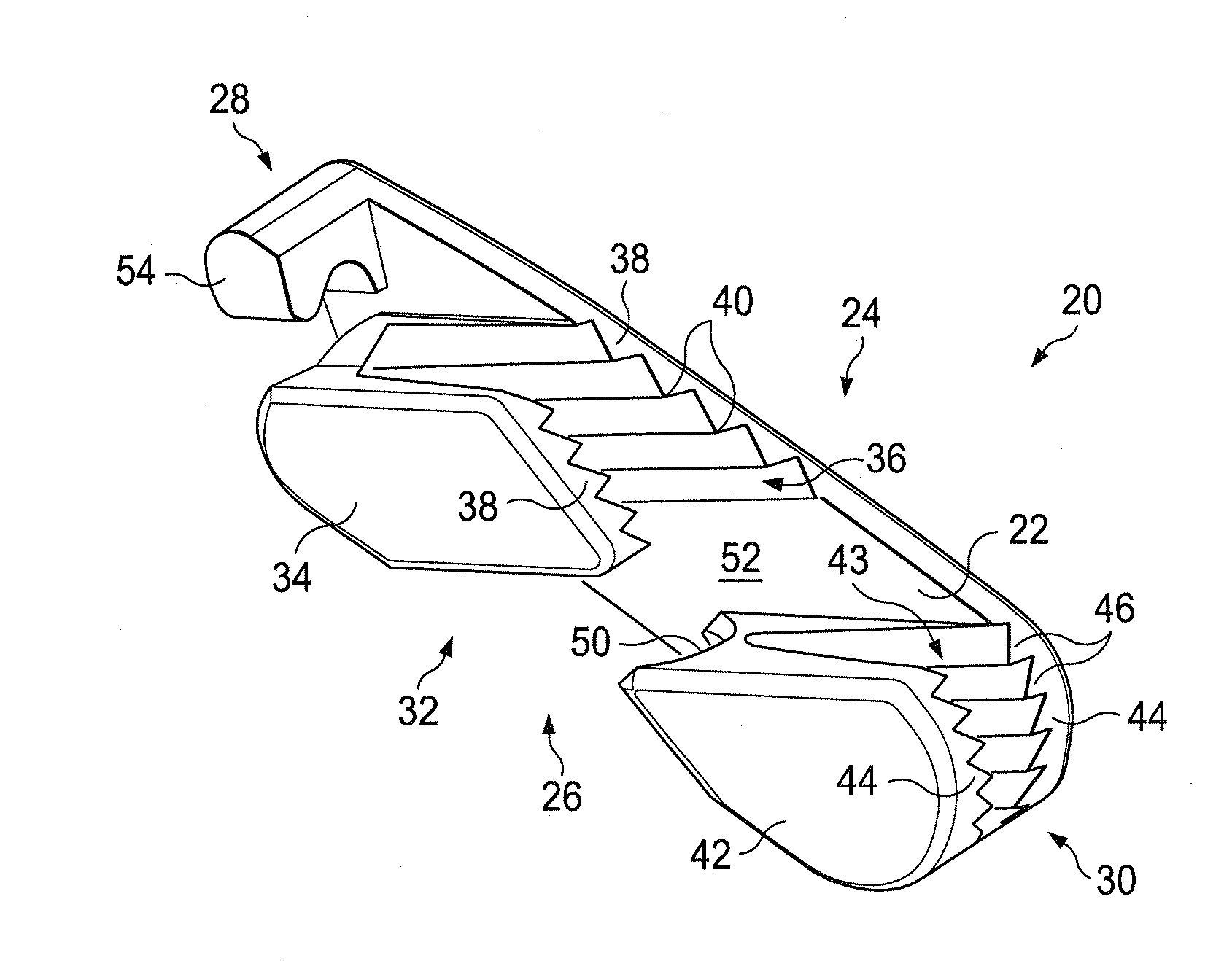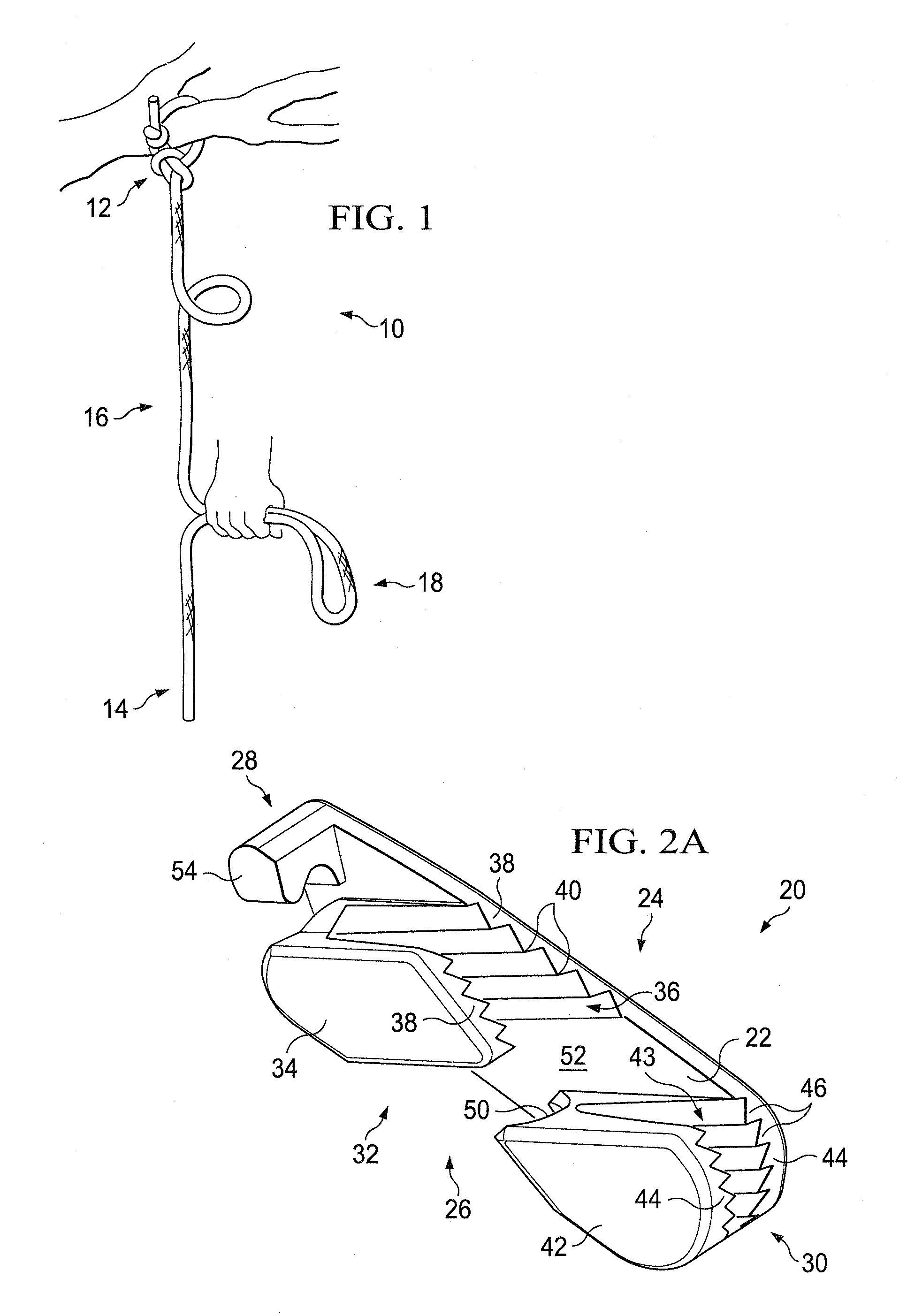Rope tightener and self locking rope tie down device
a rope tie down and rope technology, applied in the direction of snap fasteners, buckles, mechanical devices, etc., can solve the problems of rope damage, material may be heavy and difficult to manage and secure, and difficult to untie, so as to achieve simple use and simple and quick placement of the devi
- Summary
- Abstract
- Description
- Claims
- Application Information
AI Technical Summary
Benefits of technology
Problems solved by technology
Method used
Image
Examples
Embodiment Construction
[0023]In describing how the invention works or is used in the application of securing or tightening a length of rope 10, it is necessary to describe the terms commonly associated in using and securing rope 10. Referring first to FIG. 1, the working end 12 of rope 10 is shown. Working end 12 is the end of rope 10 that is used to secure rope 10 to an anchor point. The running end 14 of rope 10 is the end of rope 10 that is not rigged, i.e., the free end. The standing part 16 of the rope 10 is the portion of rope 10 that is not fastened at the rigging point. Bight 18 is a “U” shaped bend in rope 10 that orients a portion of rope 10 back parallel with itself. When rope 10 is “taught”, this refers to tensioning rope 10 to remove the slack from rope 10.
[0024]Referring now to FIGS. 2A-2D, a rope tightening and securing device is designated generally 20. Device 20 has a base member 22. Device 20 has a top 24, a bottom 26, a first end 28, a second end 30 and a first side 32. Device 20 may be...
PUM
 Login to View More
Login to View More Abstract
Description
Claims
Application Information
 Login to View More
Login to View More - R&D
- Intellectual Property
- Life Sciences
- Materials
- Tech Scout
- Unparalleled Data Quality
- Higher Quality Content
- 60% Fewer Hallucinations
Browse by: Latest US Patents, China's latest patents, Technical Efficacy Thesaurus, Application Domain, Technology Topic, Popular Technical Reports.
© 2025 PatSnap. All rights reserved.Legal|Privacy policy|Modern Slavery Act Transparency Statement|Sitemap|About US| Contact US: help@patsnap.com



